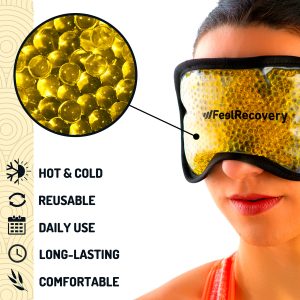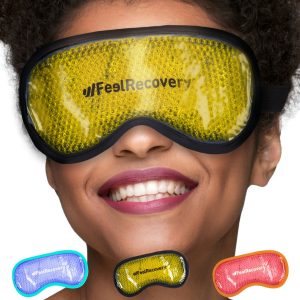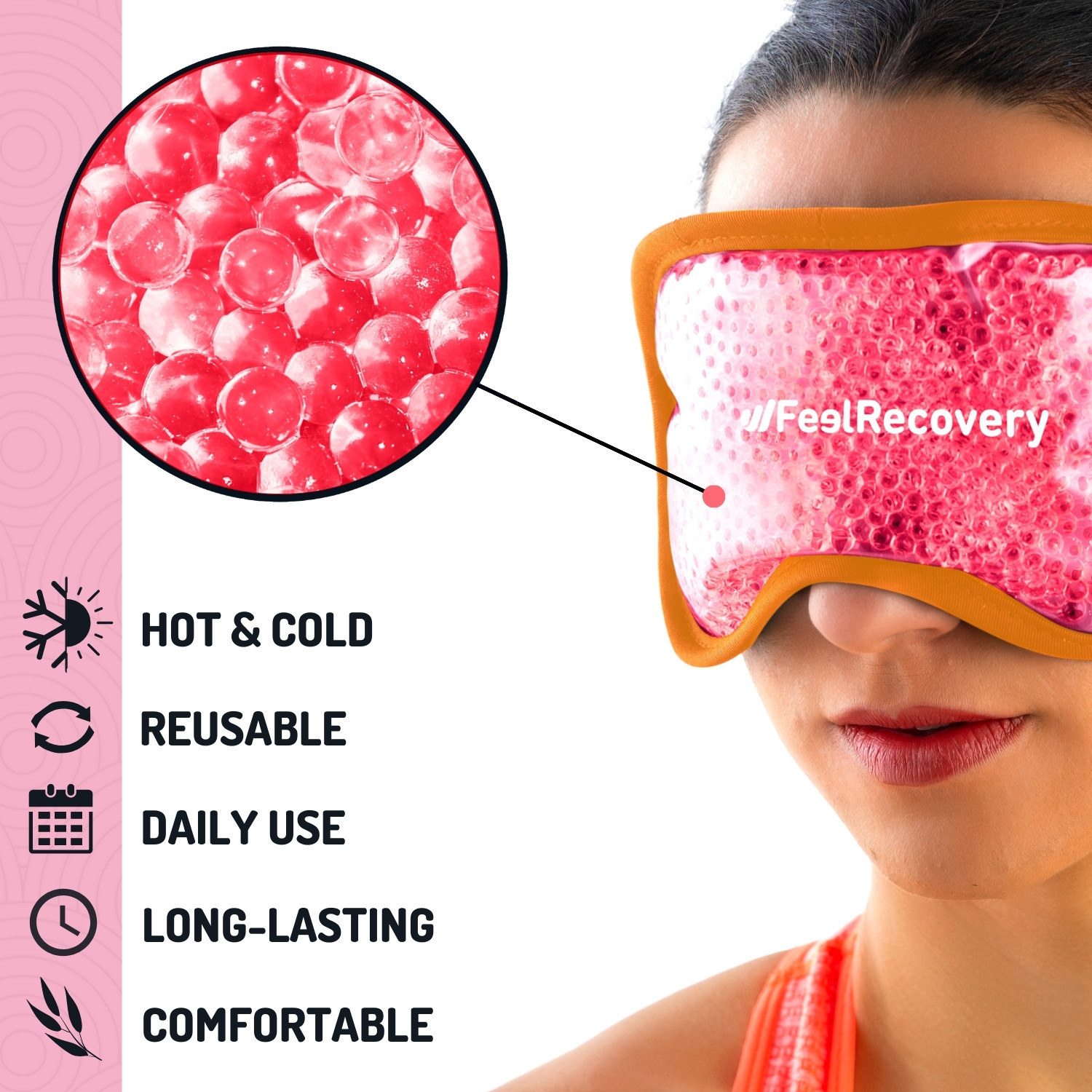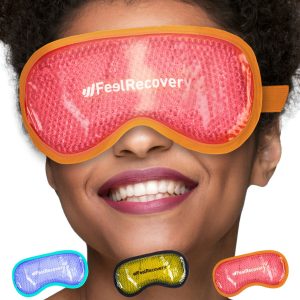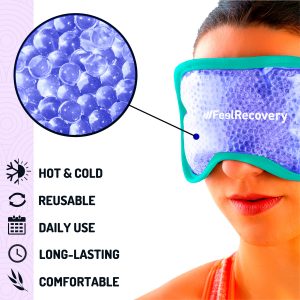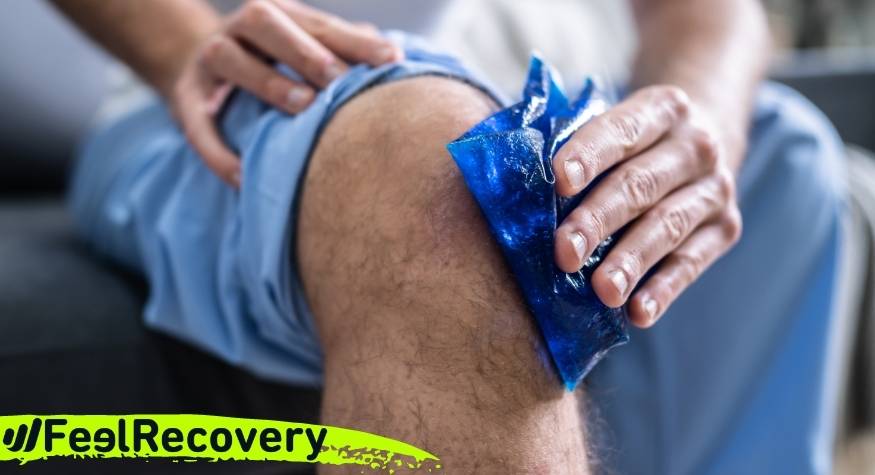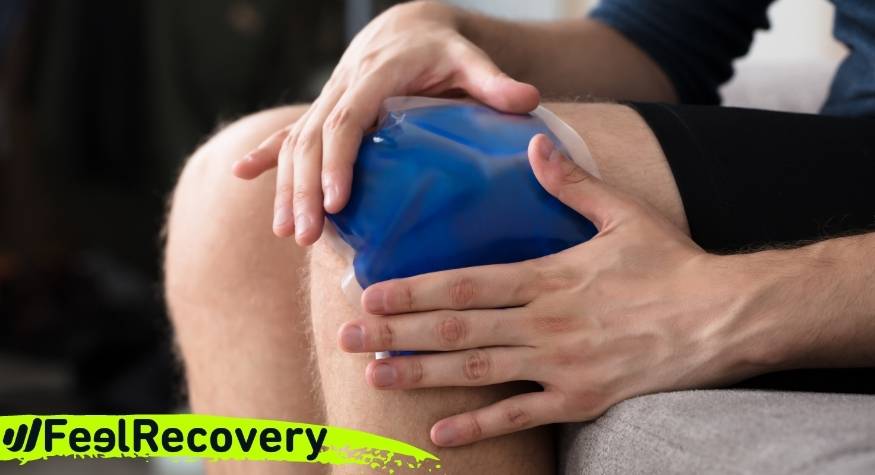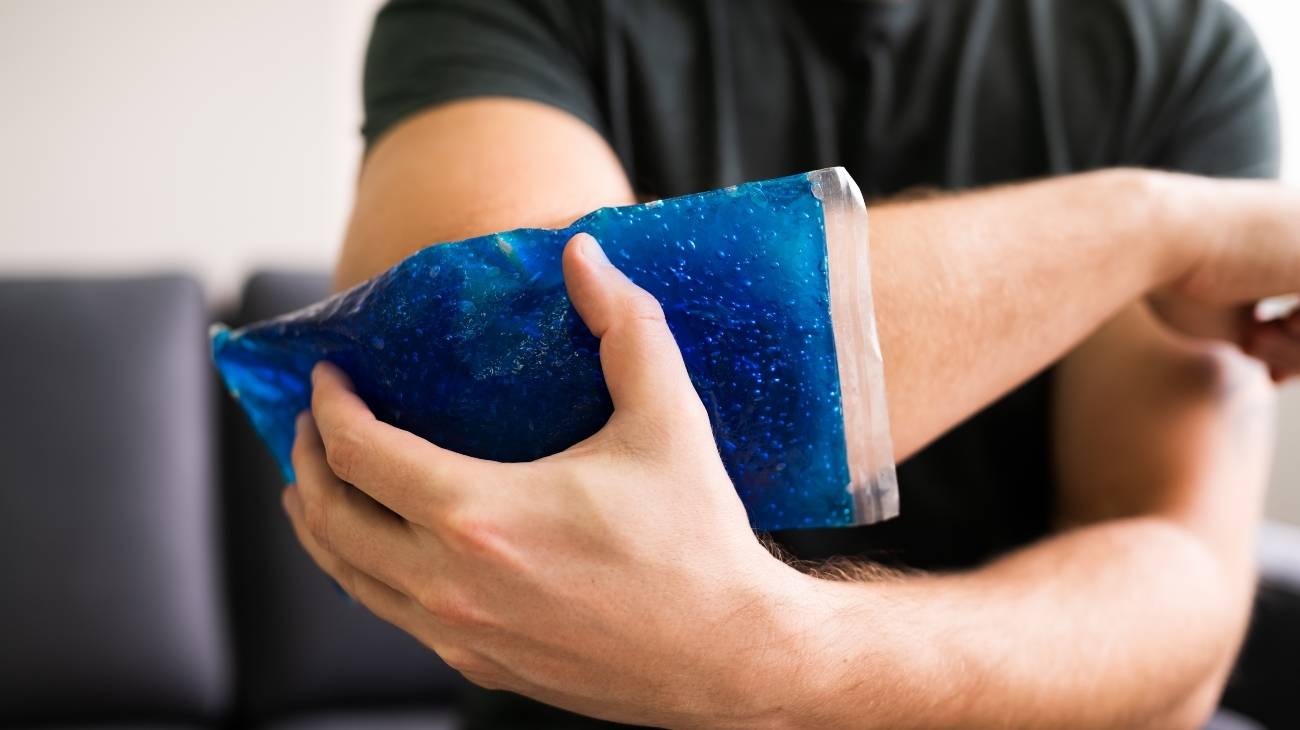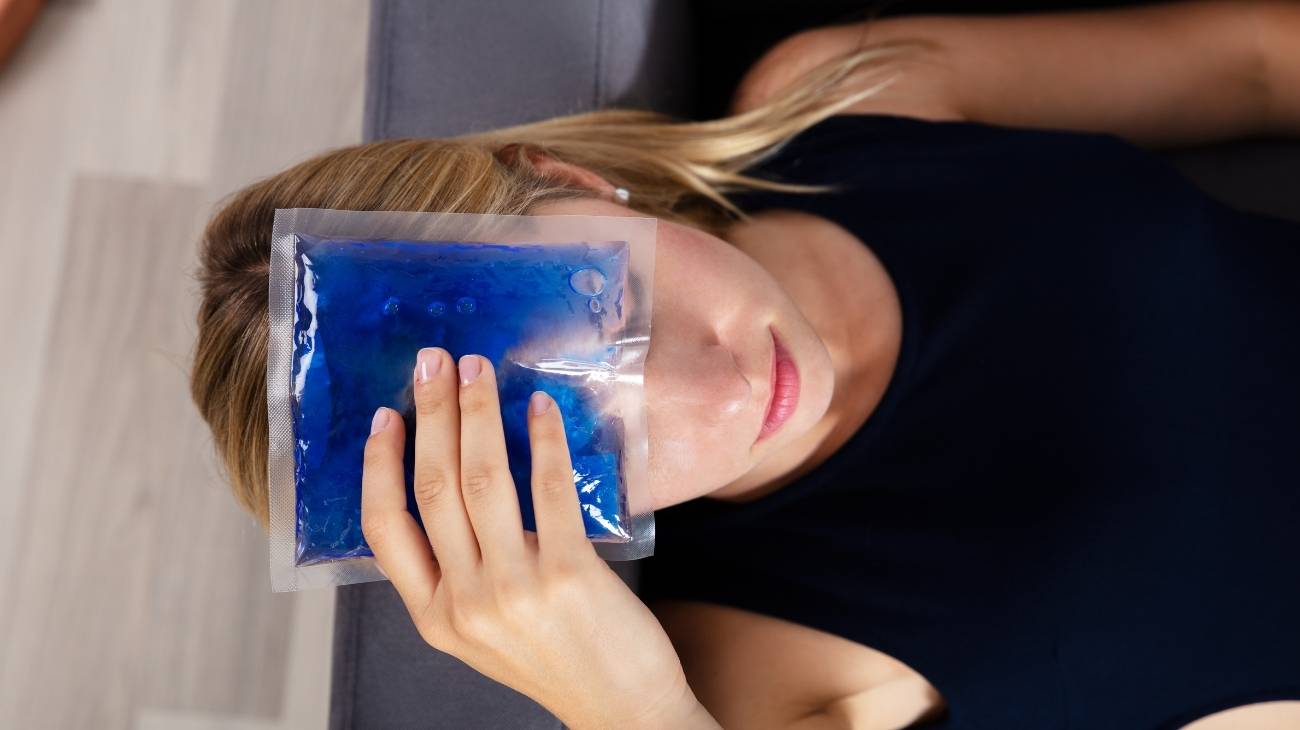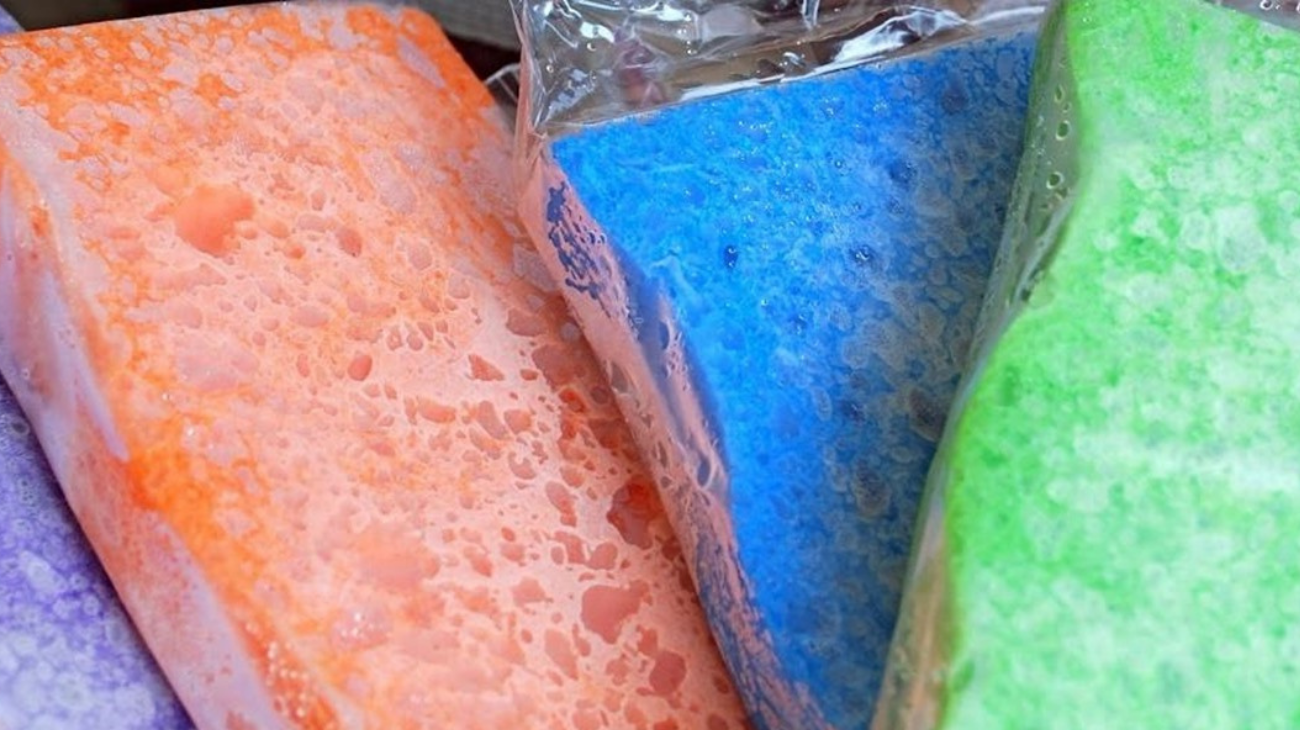Gel packs are a highly recommended option by medical specialists and sports coaches for heat or cold therapy. All this, thanks to its properties to reduce muscle pain, inflammation, swelling, among others, caused by injuries.
However, some people still wonder how to safely use gel packs for heat or cold therapy. If you are one of them, you are in the right place to clear up all your doubts on this subject. Let's get started!
What are the health benefits of using heat and cold therapy?
Using hot and cold therapies promotes movement of the joints in an improved range. Therefore, they are very beneficial in treating pain and inflammation, helping to heal the injury.
However, there are other benefits worth knowing on a case-by-case basis, and the following list tells you about them:
- The cold helps to reduce inflammation by decreasing blood flow.
- Cold therapy reduces tissue damage and inflammation.
- Also, it acts as a local analgesic, numbing the painful tissues.
- Cryotherapy is used by health specialists and trainers to induce vasoconstriction. As a pro, it will reduce muscle spasms, pain, inflammation, metabolic rate and circulation.
- Heat therapy is implemented to increase circulation, making the connective tissue more flexible.
- Thermotherapy reduces joint stiffness, muscle spasms and pain.
- Inflammation and congestion of tissues are reduced and improved with heat therapy.
- In the case of chronic pain, heat helps to relax the muscles by promoting blood flow.
- Muscle pain caused by intense physical activity is reduced by alternating cold and heat.
- Alternating cold and heat will be beneficial for injuries that prevent aerobic activity.
- Athletes who need to recover from an injury or pain may improve with contrast therapy. The effects are reflected in reduced pain, inflammation, swelling.
- Contrast therapies improve muscle strains, as long as they are mild. They also improve alertness and increase heart rate.
- Heat and cold therapies promote faster recovery after exercise, increase energy and elevate mood.
Bestseller
When to use hot or cold gel packs depending on the type of pain and injury?
When in doubt about which therapy to use, whether it is hot or cold, the answer will depend on the type of injury. Also, considering the general rules applied according to the benefits that each temperature brings. In the next segment we want to tell you when to use hot or cold gel packs, according to the type of injury or pain. Let's see:
When to apply cold?
Cold therapy contributes to the injury healing process while reducing pain and discomfort. This is possible because it reduces the metabolic processes that generate cell death in the injured area.
Based on the RICE (Rest, Cold, Compression and Lifting) method, cold gel apck therapies are very effective in treating injuries. However, to reduce swelling there must be a combination of cold and compression.
For all this and more, it is important that you know in which other situations the use of cold gel packs is convenient:
- As a first emergency in case of trauma, before 72 hours after the injury.
- If there is swelling or fever.
- Immediately after an exercise routine
- To treat acute injuries and recent wounds.
- In case of fractures, sprain or strain.
- To treat Osteoarthritis, Arthroplasties, Endoprosthesis, Tendinitis and Migraines.
- As therapy in post-operative periods, especially in surgeries associated with extremities and maxillofacial.
- To reduce hypertonia.
- In case of spasms, stiffness and muscle cramps.
- To treat minor or superficial burns.
When to apply heat?
Applying heat to injuries is very effective in relieving pain and tension as it relaxes the tissue. However, it is necessary that the initial stages of healing have been completed.
In sports medicine, heat therapy is combined with exercise for a faster and more effective recovery. Therefore, it is used to promote the range of motion of the injured area, allowing an even faster recovery.
Below, we will tell you what other injuries or types of pain you can use hot gel packs for:
- If the injury is more than 72 hours old or is an insidious injury, heat therapy will be very beneficial.
- It contributes to the recovery of joints and muscles.
- It is very effective if indicated in the medium term, especially in chronic pain or recurrent discomfort.
- To relieve cramps, spasms and muscle stiffness, provided there is no injury.
- In case of pain caused by drugs, menstrual pain, overexertion, pulling or fibromyalgia.
- To treat arthritis and lack of sleep.
- As an analgesic and decontractor.
- To contribute to the healing of the lesion, as heat increases the elasticity of the tissues.
- As an ideal complement to rehabilitation exercises.
When to apply cold/hot contrast?
Contrast therapy consists of putting the body in contact with heat for a few minutes so that vasodilation takes place. In this process, the blood flow from and to the extremities is increased. Then, the body area is changed to a very cold temperature for a couple of minutes to induce vasoconstriction. Thanks to this, the blood flow is slowed down and circulation is promoted locally.
Alternating between heat and cold on a muscular level will generate pumping as it occurs during light aerobic activity. It is very effective in injuries that prevent the individual from physical activity.
We will then tell you what other cases you can use hot/cold contrast therapies for:
- To remove metabolic waste from the bloodstream and muscles.
- Effective in reducing induced muscle damage (IDME) and preventing delayed-onset muscle pain (DOMS)
- As pain or injury recovery therapy.
- Very effective in reducing swelling and inflammation.
- To improve mild muscle strains and circulation.
- As a quick and effective recovery from pain following a heavy exercise routine.
- To increase heart rate, energy and mood.
How to use gel ice packs for hot or cold without health risks?
Enjoying an effective hot or cold session and without risk is possible using gel-filled bags. However, this will depend on the correct performance of the product. If you don't have any ideas on how to do it, don't worry, below we will give you some effective recommendations for each case:
Use in cold
Before using cold gel packs, it is important to consider the following recommendations:
- Place the product in the freezer or refrigerator for at least 2 hours to obtain the best results.
- Then, you should test the temperature to touch to see if it is the right one, or leave it longer if necessary.
- If it is too cold, wait a few minutes outside the freezer before using it.
- It is not necessary to use cloth cloths for placement, as our products come with a soft cloth cover to the touch. This guarantees a pleasant and satisfying experience for the user. However, this will depend on the manufacturer, as some gel packs do require a cloth to be placed on the skin.
- The therapy is indicated for placing the cold gel packs on the affected area for a maximum of 30 minutes at a time.
- This time should never be exceeded.
- Combine cold therapy with lifting.
- Once the time indicated by the specialist has elapsed, the product should be returned to the freezer for 30 minutes before using it again.
- During the therapy the skin in the injured area must be monitored every 5 minutes. In case of discoloration or redness, use should be discontinued immediately.
- For a single treatment, this cycle should be repeated 2 to 3 times, and several times a day to obtain effective results in terms of pain and swelling. However, this process must be indicated by a specialist.
Hot use
Our gel packs are not as recommended for heat therapy. However, for hot use by heating in a microwave you should follow these guidelines:
- Heat the gel ice pack for 30 seconds in the 800W microwave. If the microwave does not have this power, you must adjust the times before you achieve the appropriate one.
- Remove and check the temperature to the touch of your skin.
- Then, massage the gel with your hands to distribute the heat evenly.
- If it is not hot enough, you should heat it up for 10 more seconds in the microwave.
- If the temperature has been exceeded, you should let it cool down before reheating. Once it is at room temperature you can repeat the process described above.
- The gel packs must always be at room temperature to be heated in the microwave. Never do this when it is frozen.
- Only microwave the gel pack, never put the cover or cloth wrap on.
- Supervise the heating process of the gel pack. If you notice any swelling during the process, stop immediately and wait for it to go down before reheating. This means that the package is overheated.
- Never sit or lean on the gel pack, as this could cause it to leak or break. If it does, let it cool down before removing it and then discard it.
- Do not use in ovens.
In case of heating in hot water we recommend you follow these instructions:
- Boil approximately 3.5 litres of water.
- Remove the water from the fire.
- Soak the gel ice packs for 5 to 7 minutes. Never place the product while the water is on the stove.
- Remove from the hot water using non-sharp kitchen tongs.
- Towel dry the gel pack.
- Make sure there are no breaks or leaks. If there are any, you should dispose of them immediately.
- Check the temperature by touch to make sure it is tolerable. If it has been overheated, you should let it cool down for a couple of minutes before applying it.
- Place it in its case before being used on the injury.

